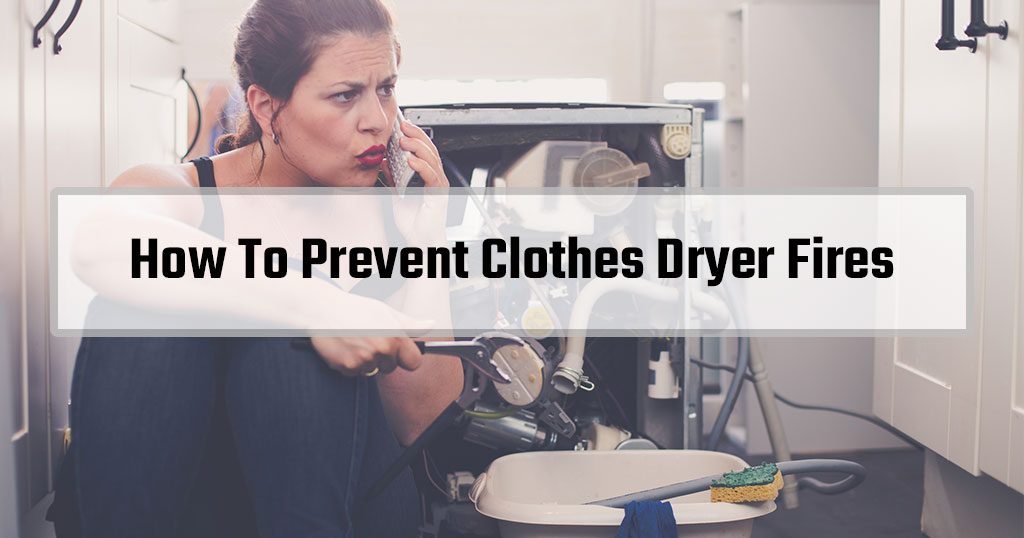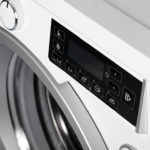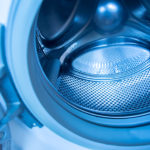
Few people realize the importance of dryer safety. According to the U.S. Consumer Product Safety Commission, there are an estimated annual 15,500 fires, 10 deaths and 10 injuries caused by dryer fire. Several hundred people a year are also subjected to carbon monoxide poisoning from improper dryer safety measures. The financial costs come to nearly $100,000,000 per year. In some cases faulty appliances are to blame, but many fires can be prevented with proper dryer safety precautions.
Why Dryer Fires Occur
Lint accumulation and reduced airflow feed on each other to provide conditions ripe for a fire. Lint is a highly combustible material, which, interestingly enough, is one of the ingredients in a recipe for home-made fire starters. A number of dryer vent problems contribute to this.
A Growing Problem
 Traditionally, most clothes dryers were in the basement. However, nowadays many newer homes tend to have dryers located away from an outside wall in bedrooms, bathrooms, kitchens and hall closets. These new locations mean dryers tend to be vented longer distances and vents are generally installed with sharp turns and bends to accommodate the structure of the home. As a result, dryer vents are harder to reach, and also create more places for lint to gather. The ideal solution is to have short, straight, dryer duct venting. However, a dryer vent booster, while not the ideal approach, can improve your dryer venting in cases where your venting is longer and/or has more bends than it should. In addition to creating a fire hazard, if the venting is too long and/or has two many bends, it will cause your dryer to take much longer than necessary to dry loads.
Traditionally, most clothes dryers were in the basement. However, nowadays many newer homes tend to have dryers located away from an outside wall in bedrooms, bathrooms, kitchens and hall closets. These new locations mean dryers tend to be vented longer distances and vents are generally installed with sharp turns and bends to accommodate the structure of the home. As a result, dryer vents are harder to reach, and also create more places for lint to gather. The ideal solution is to have short, straight, dryer duct venting. However, a dryer vent booster, while not the ideal approach, can improve your dryer venting in cases where your venting is longer and/or has more bends than it should. In addition to creating a fire hazard, if the venting is too long and/or has two many bends, it will cause your dryer to take much longer than necessary to dry loads.
Inside the Dryer
 Lint is the biggest culprit here. As you know from cleaning out your lint filter, dryers produce very large quantities of lint. Most people assume their lint traps catch all the lint, and that all they need to do is clean them out after each load. However, a significant amount of this lint is not caught by the lint trap and builds up inside the dryer-even on the heating element! If you are skeptical, try this experiment: pull out the lint trap and look underneath it- you may find large mounds of lint staring at you. Lint can build up on the heating element and in other places inside the dryer, causing it to overheat and possibly catch fire. As a rule, a fire starts from a spark in the machine. However, improper clothes dryer venting practices outside the dryer can play a key role in this process.
Lint is the biggest culprit here. As you know from cleaning out your lint filter, dryers produce very large quantities of lint. Most people assume their lint traps catch all the lint, and that all they need to do is clean them out after each load. However, a significant amount of this lint is not caught by the lint trap and builds up inside the dryer-even on the heating element! If you are skeptical, try this experiment: pull out the lint trap and look underneath it- you may find large mounds of lint staring at you. Lint can build up on the heating element and in other places inside the dryer, causing it to overheat and possibly catch fire. As a rule, a fire starts from a spark in the machine. However, improper clothes dryer venting practices outside the dryer can play a key role in this process.
Outside the Dryer
There are many improper dryer vent practices which restrict airflow and lead to lint buildup, the two main preventable causes of dryer fires.
Some of the most common and important dryer vent mistakes are:
- Dryer vents are too long and/or have too many bends, but don’t use a dryer duct booster, resulting in lint buildup. When it comes to dryer vents, shorter and straighter is better.
- Use of flammable, flimsy plastic or foil duct extenders. Only metal vents should be used, which is what most manufacturers specify. Metal vents also resist crushing better than plastic and foil, which allows the air and lint to be carried out of the system. Reduced airflow from build-up or crushing can cause overheating and wear out the clothes and appliance faster. In fact, many state and local municipalities have placed requirements on new and remodeling projects to include all metal dryer venting.
- Inadequate clearance space between dryer and wall. Many people create problems by putting their dryer right against the wall, crushing the venting material in the process. The cumulative effect of reduced airflow and the resulting lint build-up prevent the dryer from drying at the normal rate. This causes the high temperature limit safety switch to cycle on and off to control the heater. Most high temperature limit safety switches were not designed to continuously cycle on and off, so they fail over a period of time.
- Failure to clean the dryer duct.
Your Dryer May be Failing If:
The clothes are taking an inordinately long period of time to dry, come out hotter than usual or if the vent hood flapper doesn’t open. Maintenance is needed in these cases.
Proper Installation & Choice of Building Materials
- Make sure the dryer duct is made of solid metallic material. Both vinyl and foil are combustible and spiral-wound surfaces tend to catch lint more readily.
- The dryer duct should vent to the exterior and in no case should it vent to the attic or crawlspace. Avoid the use of inside heat recovery diverter valves or termination boxes, which do not comply with current standards.
- Avoid kinking or crushing the dryer duct to make up for installation in tight quarters -this further restricts airflow. If you really want to save the extra space, the Dryerbox is a new invention that allows the dryer to be safely installed against the wall.
- Minimize the length of the exhaust duct (maximum recommended lengths depend on a number of factors, such as number of bends, and vary by model-check with your manufacturer for their specifications). If this is not possible, you can install a dryer duct booster.
- If at all possible, use 4-inch diameter vent pipe and exterior exhaust hoods that have openings of sixteen square inches or more, which offer the least resistance to air flow.
- Don’t use screws to put your vent pipe together – the screw shafts inside the piping collect lint and cause additional friction.
Keep the Dryer Duct in Good Condition
Disconnect, clean and inspect the dryer duct run on a regular basis, or hire a professional company to clean the dryer duct. This will reduce the fire hazard, increase the dryer’s efficiency and increase its lifespan. In addition, you are less likely to experience water damage.
Keep Your Dryer as Lint-Free as Possible
By keeping your dryer clean, not only will you significantly reduce the fire hazard, you will also save money as your dryer will run more efficiently and last longer.
To keep your dryer clean:
- Use a lint brush or vacuum attachment to remove accumulated lint from under the lint trap and other accessible places on a periodic basis.
- Every 1-3 years, depending upon usage, have the dryer taken apart and thoroughly cleaned out by a qualified service technician.
- Clean the lint trap after each load.
Alternative Solutions
- Use a condensing dryer. Unlike conventional clothes dryers, condensing dryers do require external clothes dryer venting. This significantly reduces the risk of a dryer fire.
- Use a spin dryer, which uses an extremely fast spin speed to extract water from the clothes. They extract significantly more water from the clothes than a washing machine spin cycle does. Spin dryers can be used alone or in conjunction with a conventional clothes dryer.
Before You Go….
- Never let your clothes dryer run while you are out of the house or even worse, when you are asleep.
- Thoroughly read manufacturers’ instructions regarding the safe use of their dryers.
- If all else fails, you can always use an old-fashioned clothesline. There have never been any reported clothesline fires!
Copied with permission from: http://plrplr.com/27101/how-to-prevent-clothes-dryer-fires/


Speak Your Mind